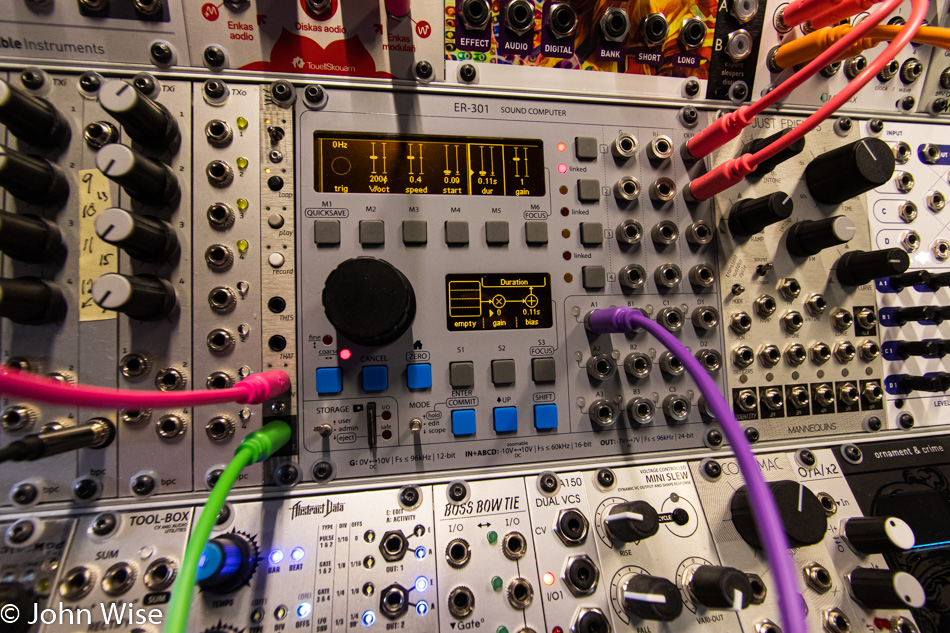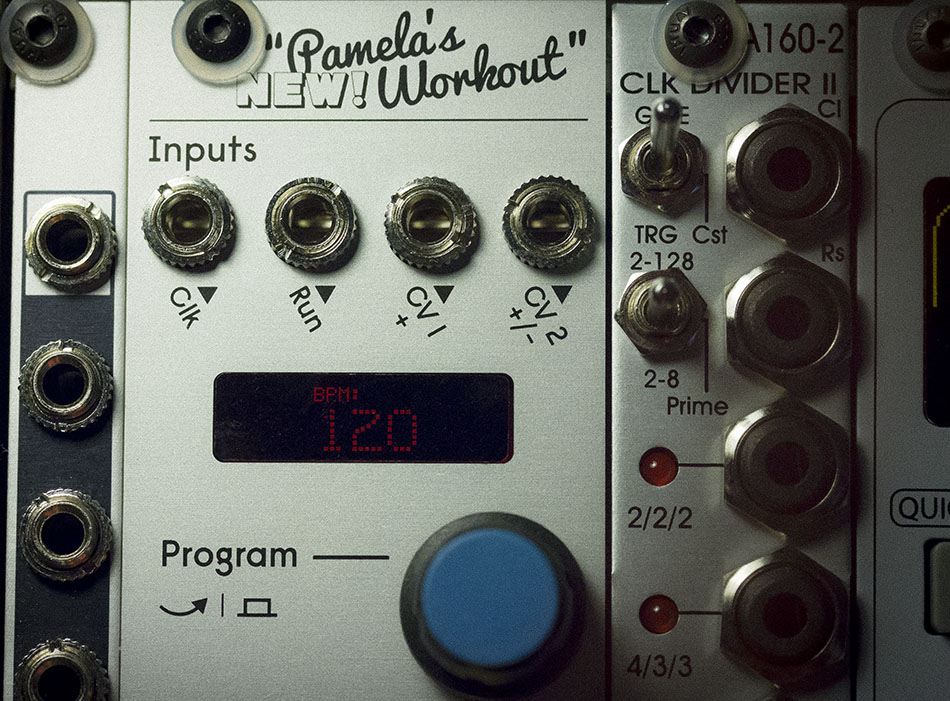
This blog entry isn’t a noodling to make a patch or explore some sound it is a reflection of a brief conversation I was having on a Eurorack forum on Facebook earlier today. One of the members posted a photo of what he thought was a lot of patch cables, turned out there were 179 of them. This got me wondering about how many patch cables I have and before I knew it, one thing led to another and I had to count everything.
I currently own 181 modules or individual synthesizer components that are mounted in multiple cases and can work with each other. In order for that to happen, the case supplies the electricity, and using patch cables I make connections between the modules, allowing them to communicate. I counted 473 of these cables of varying lengths and colors. In noting online how many cables I have, I didn’t mention the number of modules but I did tell the poster that so many were needed for the 1,645 jacks my system had.
Having gone through the tedium of trying to count these accurately, it triggered my OCD to know the rest of the numbers. This system now features 822 knobs, 156 switches, 89 sliders, 8 SD cards, 35 displays, and 463 buttons. If you were to think about this synthesizer as a matrix the grid would have 1,530 knobs, buttons, sliders, and switches for influencing what enters and leaves the 1,645 jacks over patch cables that could be in the hundreds.
To this day my exercise in playing with these types of electronics remains daunting. For example, the thin module with the pink and green patch cables is the WhimsicalRaps W/ and recently it received a firmware update that radically alters the way it works. It was cryptic and difficult before and the upgrade goes far in backing off that difficulty but it also means I have to learn how to use it all over again. Similarly, the module to the right of the ER-301 Sound Computer underwent a rewrite of its firmware which alters the way it works too. I only found out about this change yesterday and to some small degree feel like I’m relearning how to work with Just Friends. Then, while I’m still writing this blog entry, Trent from WhimsicalRaps releases v4.0 and I have even more new functionality to consider. At the center of the photos is the ER-301 which has been under a constant state of evolution since the day I got it, as it’s been on a journey to Version 1.0 of its firmware trajectory; we are currently at v0.5.03.
Come to think about it, this is a strange week when it comes to firmware updates, as Industrial Music Electronics released fixes for the Piston Honda MK3 and Hertz Donut MK3. ALM updated Pamela’s New Workout and Abstract Data released the long-awaited version 2.0 for the ADE-32 Octocontroller. Also quite recently, Moog put out its first update in 5 years for Mother 32 while Expert Sleepers released yet another in its long list of updates of the Disting MK4. Last but not least, the ongoing improvements of Ansible from Monome saw a new beta become available just a week ago and more recent updates for Teletype have been coming out. One of the contributors on the Teletype firmware needs to commit his changes after he forks a fresh copy so I’m waiting on that.
So is there any real point or relevance to this post I hope anyone can relate to? This is my version of following baseball or building a custom car. It is my Game of Thrones where I’m watching the unfolding drama except it features a cast made of a spectrum of sounds. The big difference is that I’m not dependent on others supplying me with new content or gear as even if I were to stop upgrading and adding to this synth, it would still give me a near infinity of options to make noise. In other words, I don’t need people to offer me canned drama, I can create my own.
We choose to evolve, grow, and patch ourselves anew or we wither and become stale. Without challenges, our own firmware appears dated and mostly dysfunctional on today’s platform. I’ll admit that learning this synth, philosophy, sociology, history, or trying to advance my sculpting in 3D skills are all less than satisfying at times, but the alternative is to practice redundancy or death. Sure, this is an old theme here, but just as we’ll watch 100 episodes of a favorite TV show or 100 games of a team we love, I’m practicing sharing iterations of a theme a hundred times as I try to get the messaging just right just as I’ve practiced hundreds of times connecting those synth modules to other modules as I venture into discovering something new.
